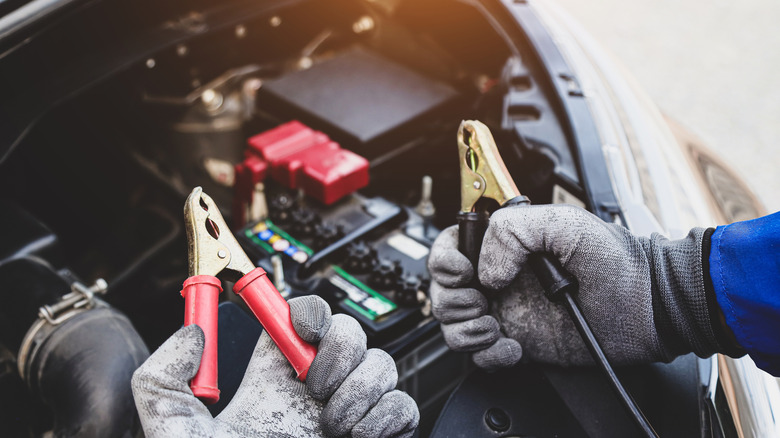What Happens If You Accidentally Reverse Jumper Cables?
Many vehicle owners have found themselves unable to start their car due to a dead battery. While most might call AAA, some might find it more convenient to grab jumper cables and jump the dead battery themselves.
There are, of course, many factors to consider if you are bent on jumping your own car battery, but when you are connecting jumper cables, it is essential that you make sure to connect them correctly, as failure to do so could potentially lead to a short circuit, resulting in serious damage to any connected battery or vehicle, and possible injury to any people in the immediate area.
Jumper cables are designed to transport car-starting voltage from one battery to another, and a short circuit created by connecting a positive charging cable to a negative battery post (or vice versa) will likely disable the battery permanently. It can also damage the jumper cables. Likewise, the surge of electricity could lead to blown fuses and even destroy the vehicle's electrical components. Apart from the possibility of electrical shock, reversing the cables may also create sparks that could ignite the hydrogen gas vented by some car batteries.
How to properly use your jumper cables
When you consider the potential for property damage and personal injury, it's wise to avoid making any such mistakes. That means you need to learn the correct way to connect and disconnect jumper cables. Here's a brief jumper cable primer.
- Ensure both vehicles are in close enough proximity for cables to reach the batteries.
- With hoods raised, and the vehicles turned off, locate the batteries and ensure the positive and negative charging posts are exposed.
- Take the positive cable charger — it should be red or have a prominent + sign on it — and connect it to the positive battery post, which should also be labeled with a + sign.
- Take the negative cable charger — it should be black or have a prominent – sign on it — and connect it to the negative battery post, which should also be marked with a – sign.
- Turn on the vehicle with the working battery and allow it to idle for anywhere from 5 to 10 minutes.
- Now turn the ignition in the vehicle that had the depleted battery. The vehicle should start.
Assuming the jump works, it may help to leave both vehicles connected and running for up to 30-minutes to ensure the depleted battery properly charges. And if the jump doesn't work, it's possible the battery is fully dead and needs to either be replaced or at least recharged. To disconnect the cables, remove the negative clamp from each vehicle first, then remove the red, being sure not to touch them together in the process.

